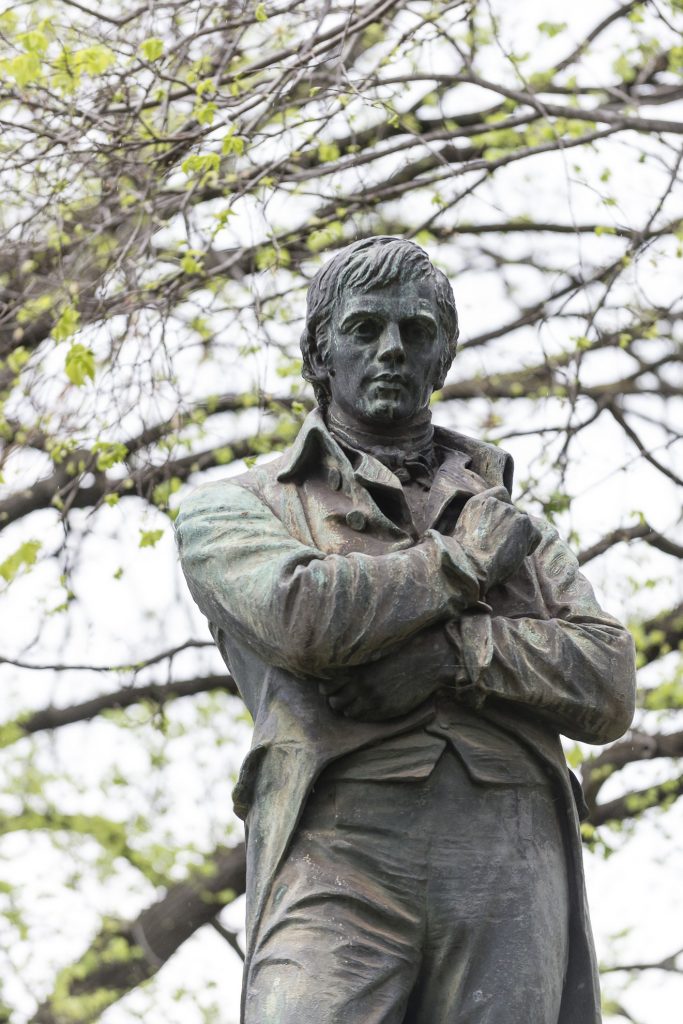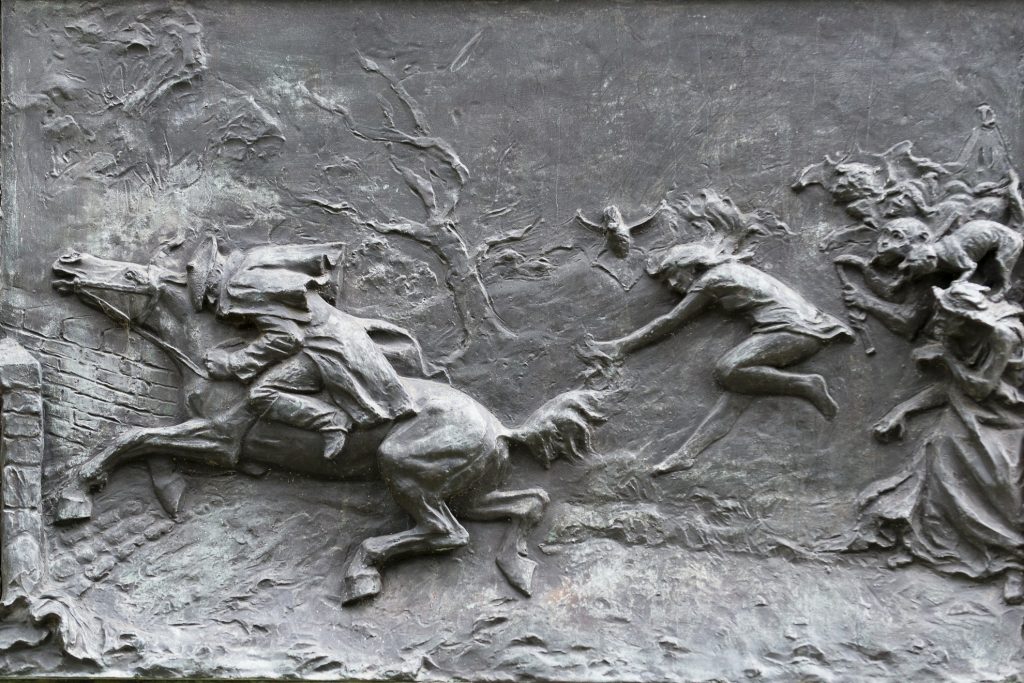Robert Burns Memorial, George Anderson Lawson, Bronze statue and plinth with granite pedestal, 1903, Treasury Gardens
Summary
Location: Treasury Gardens, Spring St
Standing figure of Robert Burns cast in bronze. The over life-size figure is depicted in tails and breeches with arms folded across the chest suggesting a powerful spirit. The psychology of the face reveals one of deep concentration. The figure stands on a square bronze plinth that is fixed to a large four-sided stepped granite pedestal. On each face of the pedestal is a bronze relief.
The cost of the work, cast in London, was approximately 1000 pounds. Nearly every Scotsman in Melbourne was said to have contributed to the cost of the work. The statue was originally located on the west side of St Kilda Road where Sir John Madden, Lieutenant Governor, unveiled the statue on 23 January 1904. The statue was moved to its current site in the Treasury Gardens in 1970 due to a change in the profile of St Kilda Rd with both the developments of the NGV and the Victorian College of the Arts occurring in the area. The Robert Burns Memorial remains an important symbol of the contribution that Scottish immigrants made to the early development of Victoria; many of the first graziers and squatters in Gippsland and the Western District were of Scottish descent. The memorial is a uniting symbol for the Melbourne's Scottish community and is an important part of Melbourne's cultural heritage.
Poet Robert Burns is perhaps one of the most famous characters in Scottish history. His importance is immense, not only in terms of his work, but for his influence on the poetry and culture of Scotland. Robert Burns was born on 25th January 1759, in the tiny village of Alloway, Ayrshire, near Ayr on the West Coast of Scotland. The son of a poor peasant farmer, Burns grew up in abject poverty and was forced labour long hours throughout his childhood. Despite their poverty Burns' father recognised the value of education and contracted the services of local teacher, John Murdoch. From an early age it was apparent that Burns was a gifted scholar, writing his first piece Handsome Nell (a poem about his first love and the first of many odes to women) at the age of 15. Unlucky in love Burns resolved to emigrate to the West Indies, intending to pay for his passage with the proceeds from the publication of his first book, Poems, Chiefly in Scottish Dialect, published in 1786. The publication immediately captured the hearts of the Scottish public and was considered to be one of the greatest collections of poetry ever written. Enjoying his new found celebrity, Burns began to write profusely publishing many poems, among them perhaps his most famous piece Auld Lang Syne. Burns' appeal was universal; his words resonated with the ruling class, the educated and the common folk alike. Love and sympathy were his greatest themes and he often paid tribute to the working class in his works. Burns died in extreme poverty of rheumatic fever in 1796 at the age of 37.



